The Bagpipe Society
Sausage skins, bladders and bagpipes
After the pandemic years it was good to be back at Chateau d’Ars for Le Son Continu, and there was a surprise waiting for me on the programme - a talk by Denis le Vraux (who I know from the Instrumentarium in Chartres) on “le son des gogues et des vessies” - literally, the sound of bladders and sausages (or sausage skins).
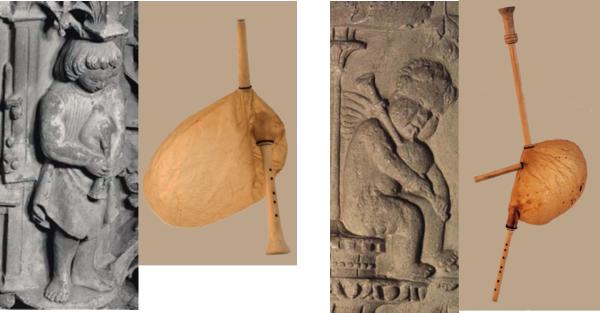
The title is actually a quote from the rambunctious and rumbustious Rabelais, patron writer of French punsters and gourmets alike. So, if you didn’t know better, you might think it was a joke (une blague in French, which comes from the Dutch balg - bellows, bag, or belly). But in fact, Denis’ researches on medieval iconography show that Rabelais was quite accurate in referring to these materials. The Instrumentarium is a remarkable project, devoted to exploring the 322 different depictions of instruments in the cathedral. Luthiers were asked to reconstruct the instruments, and Denis has now built two bladderpipes after the two different depictions on the choir screen†.
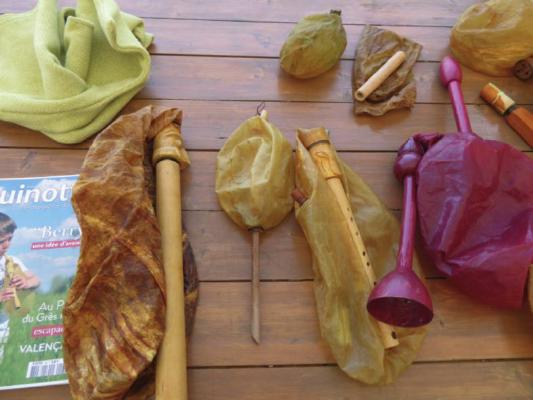
It’s quite intriguing that the instruments were already archaic when the carvings were made in 1529. (There’s another, much more modern bagpipe also shown on the screen, with shoulder drone and leather bag.) Looking at the size and shape of the bags, one is made of pig bladder, about 20cm in diameter, while the second has a distinct neck and appears to be made from a cow bladder. The bladders are tanned in wood ash for four weeks, which makes them both airtight and supple. Chartres doesn’t show a gogue, but this appears in a number of manuscripts; instead of a bladder, it uses the caecum, a sort of cul-de-sac in the intestines which, being closed at one end, makes an excellent bagpipe bag.
Again, you have to know your anatomy to see what is going on*, but that totally improbable, self-inflated bagpipe in The Garden of Earthly Delights quite clearly utilises the fourth stomach of a calf, “abomasum”, with its typical swan neck. Bosch, like Rabelais, wasn’t joking but playing it absolutely straight when he showed this weird-looking pipe, and Denis has recreated it, admittedly in bright red rather than Bosch’s faint pink. (Those who remember Dom Allan’s Martian bagpipes may find a family resemblance of sorts.)
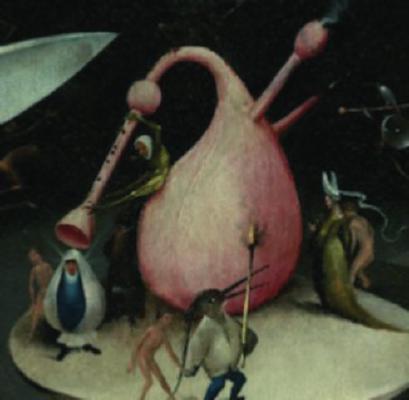
The main difficulty of recreating these instruments is that of creating the chanter and reeds. For some simple instruments it seems likely that both blowpipe and chanter are made of elder, worked green with a simple cylindrical bore. Most similar instruments still played today have single reeds, so that’s another fairly reasonable assumption. (In fact, on Robert Matta’s stand I found the remarkable bagpipe of the Val d’Aran called the Bot; droneless, single-reeded, cylindrically bored, with a wonderful low, melancholy sound - a bagpipe fossil, a bit like a coelocanth that had washed up in a far valley of the Pyrenees.)
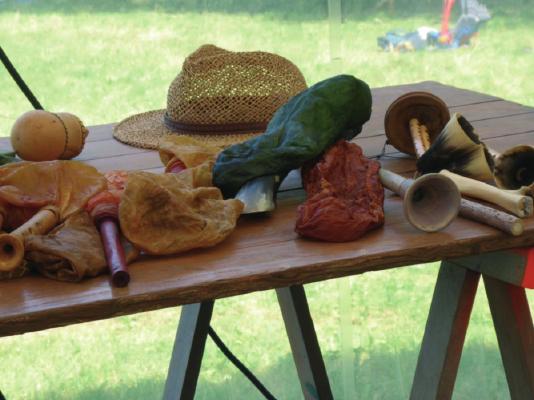
But according to Denis, the iconography shows that medieval makers explored pretty much every variation that was possible, though relatively few bladderpipes have drones (partly due to the small size of many bladders). A sculpture at Toro cathedral in central Spain shows a double bored rectangular chanter in which the drone is set behind the chanter rather than beside it, and has two lateral holes maybe allowing a rhythmic drone to be played, as on the boha.
What was particularly impressive was to see how many other people turned up with their own bladder-pipes. Denis’ collection of gogues et vessies was laid out on a table, ranging from North African zukra with their pibgorn-like horn-ended chanters to the reconstruction of the Bosch pipe. Denis quotes the holyag duda in Hungary and the shuvyr played in the CIS Repubic of Mari El as surviving bladder pipes. The use of different animal parts led to different methods of holding the bag. This helps to explain pictures in manuscripts that at first sight appear to have been designed for visual appeal rather than realism. The simplest and smallest bladder pipes depend on the bag being pressed with the wrists or even against the face, as shown both in the Arras manuscript and in a picture of a player of the shuvyr, as depicted in Alexander Buchner’s folk instrument of the world, printed in 1971.
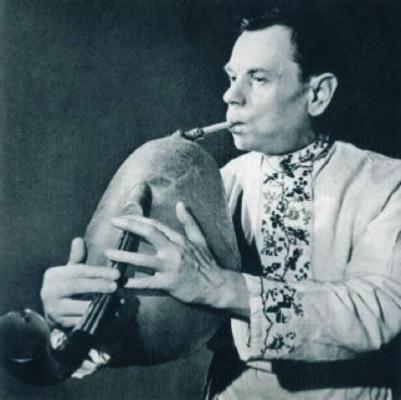
The Renaissance led to major changes in the bagpipe. Flywheel lathes were able to turn more sophisticated mouldings, and sewn leather bags become common.
Once the leather bag came in, that was it for bladder pipes. Like kazoos and swanee whistles, they became a toy or a curiosity (what a pity Tim Brooke-Taylor never introduced a bladder pipe to I’m sorry I haven’t a clue!) - or in the case of the great cabrette player Bouscatel, a cheap beginner’s instrument.
As for the various bits of intestine, they still make it to Le Son Continu, but in the form of andouillette, usually accompanied by chips.
- † http://www.instrumentariumdechartres.fr/les-instruments/les-vents-1/ch-ur-cornemuse-1ere-travee.php
- * This being deepest France naturally there was a vet present, who queried some of Denis’ attributions - she’d done enough post-mortems on horses to know her stuff.

- Data Processing Notice (GDPR)
-
@BagpipeSociety on X (formally known as Twitter)
-
TheBagpipeSociety on Instagram
-
 BagpipeSociety on Facebook
BagpipeSociety on Facebook
Something wrong or missing from this page? Let us know!
